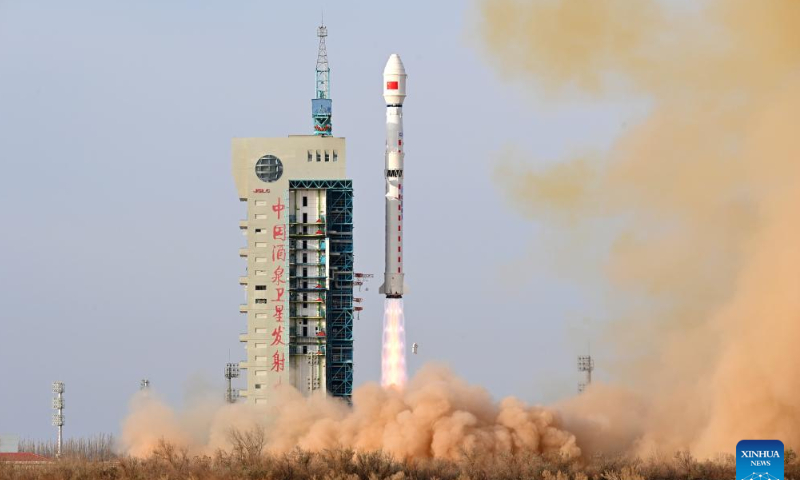China launches Yaogan-34 remote-sensing satellite for land surveys, disaster prevention

A Long March-4C rocket carrying a new remote sensing satellite of the Yaogan-34 series blasts off from the Jiuquan Satellite Launch Center in northwest China, Nov. 15, 2022. This remote sensing satellite will be used in areas such as land resources survey, urban planning, crop yield estimation, and disaster prevention and mitigation. Photo: Xinhua
China sent a new remote-sensing satellite of the Yaogan-34 series into space from the Jiuquan Satellite Launch Center in northwest China on Tuesday morning, marking the launch of the100th satellite developed by the 509th Research Institute of the Shanghai Academy of Spaceflight Technology. It will mainly be used in land resources surveys and disaster prevention.
The Yaogan-34 03 satellite, carried by a Long March-4C rocket, has entered its planned orbit.
It was the 450th flight mission of the Long March carrier rocket series. The Long March-4C launch vehicle is an ambient liquid three-stage carrier rocket with excellent performance and wide application.
For different types of satellites and different orbital requirements, the Long March-4 series launch vehicles adopt flexible launch modes and can carry single or multiple satellites in a single launch. They can deliver up to 3 tons into Sun-synchronous orbit at an altitude of 700 kilometers.
This remote-sensing satellite will be used in areas such as land surveys, urban planning, crop yield estimation, and disaster prevention.
It is the 100th satellite developed by the 509th Research Institute of the Shanghai Academy of Spaceflight Technology (SAST), under the state-owned space giant China Aerospace Science and Technology Corp (CASC).
"From zero to 100, satellites developed by our institute have shown advances and breakthroughs with every launch. From low-Earth orbit to high-Earth orbit, from near-Earth to interplanetary, from scientific experiments to operational applications, from single-star to multi-star multi-orbit cooperative networks, these satellites will lead the industry, with their comprehensive efficiency and technical strength reaching world-class levels," SAST said in a statement it sent to the Global Times on Tuesday.
In 2006, China's Yaogan-01 remote-sensing satellite was launched, a pioneer microwave remote-sensing satellite. It realized for the first time 24/7 all-weather, high-resolution Earth observation. It also made China the second country in the world to develop a medium-resolution microwave remote-sensing satellite.
Since then, more than 30 microwave remote-sensing satellites have been developed and launched, with resolution upgraded to sub-meter level, playing an important role in China's emergency disaster relief, ocean observation, agriculture and forestry monitoring, Earth mapping and other aspects.

